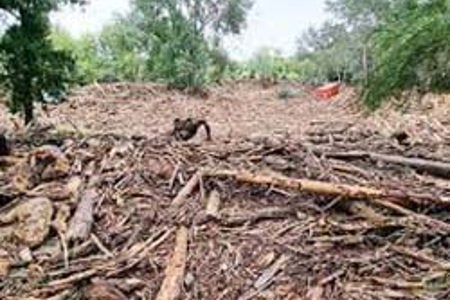
The Ministerial Inquiry into Land Use in Tairāwhiti and Wairoa Report, Outrage to Optimism, released last week, with nearly 50 recommendations post the cyclone devastation has elicited strong responses on all sides.
The recommendations are wide-ranging with potential major impacts on the forestry industry. They include: a call for an immediate halt to wide-scale clear felling of forestry, to be replaced with ‘a mosaic’ of staged logging; to transition extreme erosion zones out of pasture and production forestry into permanent forest; and a broad package of government support for clean-up, infrastructure and economic development in the region.
Forest Industry Contractors Association (FICA) CEO, Prue Younger, says while FICA was part of the inquiry, there is “not much certainty” for contractors in the final report.
“Contractors want to be part of the forestry team and part of the solution, but we are still seen as a turn-on turn-off service provider,” she says, adding that the report lacks clarity for contractors and forestry workers in several of its recommendations.
Forest Owners Association (FOA) President, Grant Dodson, says concentrating on changing forest harvest practices will not give protection against the massive climate threats and problems specific to using land in the fragile geology of the region.
New Zealand Institute of Forestry (NZIF) President, James Treadwell, agrees, saying the Ministerial Inquiry’s report fails to both examine the region’s economic options and suggest solutions to mitigate against the effects of climate change.
He says the focus is just on dealing with forest waste, rather than wider land use issues.
“The call for an immediate halt to clear felling in the Tairāwhiti region is not viable, nor is the recommendation of a 40-hectare harvest coupe limit and green up requirements. This would increase wind throw around clearfell boundaries and likely need more roads to be built.
“The result would be a massive economic loss for forest owners who will have to delay harvesting their blocks and could see increased tree loss from wind throw.”
Further recommendations include:
- Establishing a Woody Debris Taskforce to lead current and future clean-up activities in Tairāwhiti and Wairoa, with most of its funding coming from forest owners (the rest split between local and central government).
- Creating market opportunities and commercial use for harvest residues.
- Changes to forestry regulations to restrict the use of land for plantation forestry. Tightening of compliance monitoring of these rules.
- Recommending the establishment of a world-leading biodiversity credit scheme to incentivise permanent indigenous forests, piloted in the region.
- Partnering between the Government, whenua Māori landowners and the East Coast Exchange for a range of investment-ready development projects to transition to high-value land use and biodiversity.
- Seeking to address isolation of communities caused by slips and flooding, and building future resilience, through adequate maintenance and renewals of local state highways, fixing drinking water supplies and initiating self-sufficient electricity supply systems for smaller communities in Tairāwhiti.
- Appointing a Commissioner to assume responsibility for the Resource Management functions of the Gisborne District Council and to oversee new Regional Spatial Strategies and Natural and Built Environment Plans (which determine long-term land use or development suitability) and prioritise Tairawhiti to be one of the first regions to implement the new Acts.
For more detail and responses, get your copy of the June 2023 edition of NZ Logger magazine, on sale from 4 June. Check the link on this page to subscribe to either a printed or digital copy (or both).










